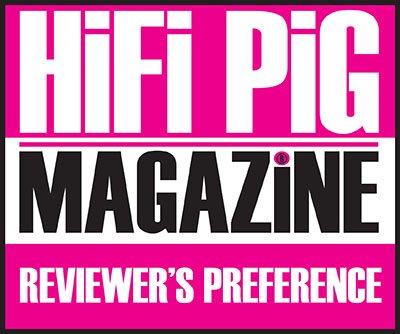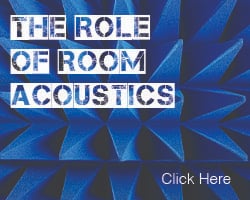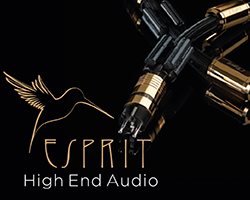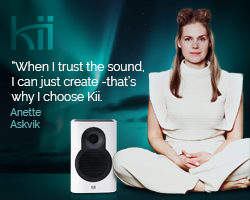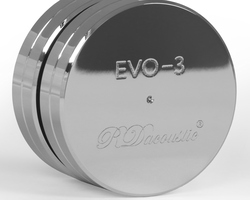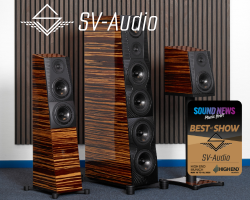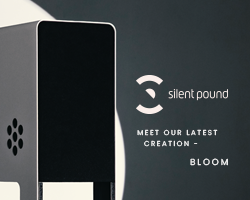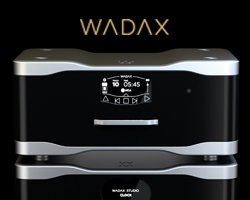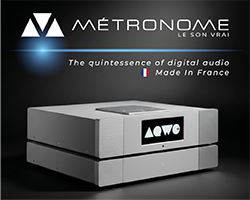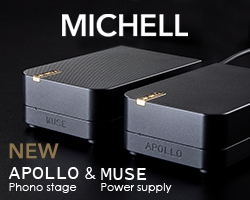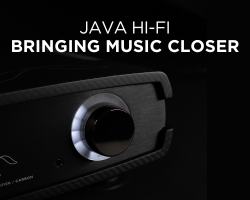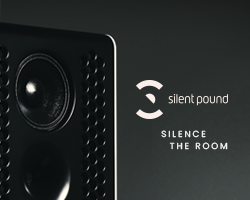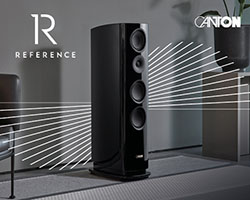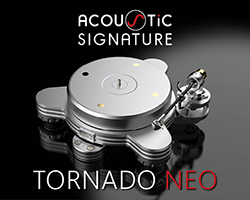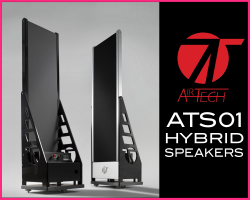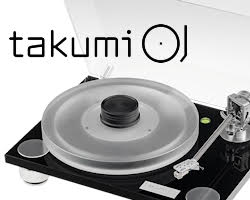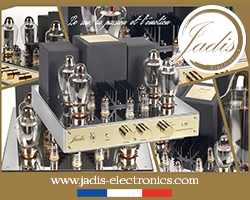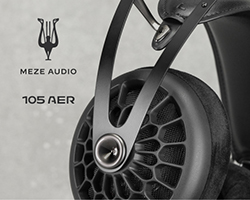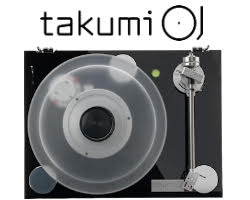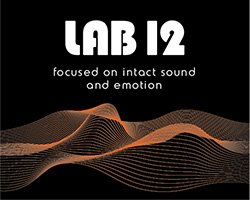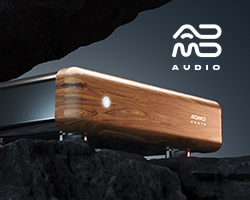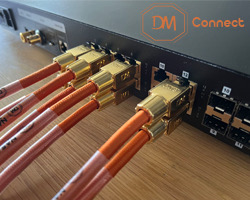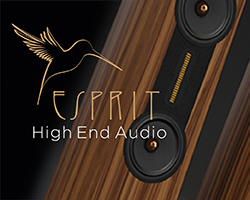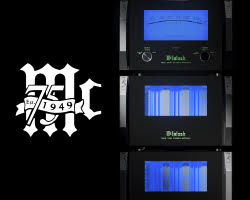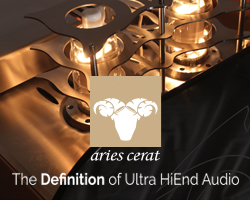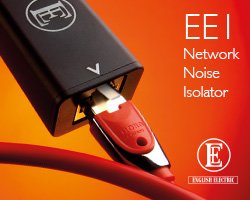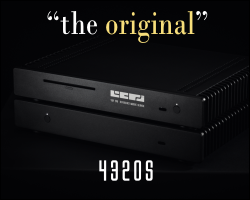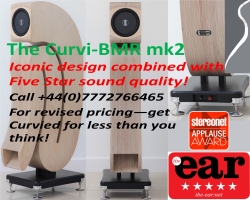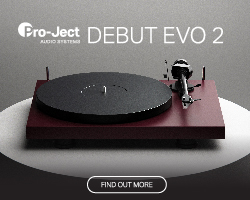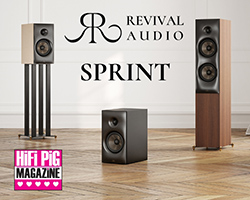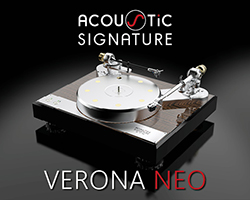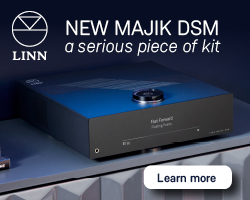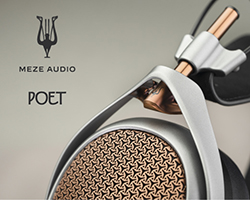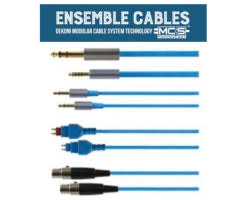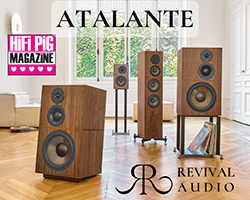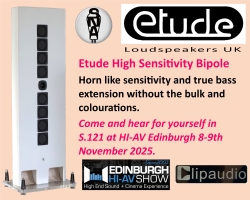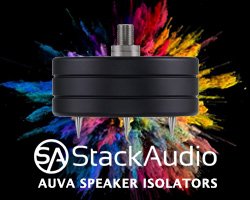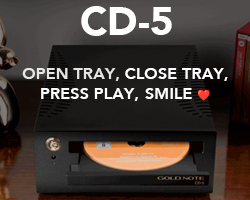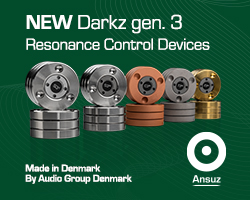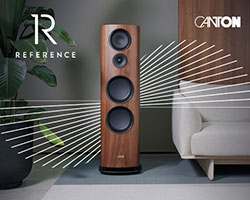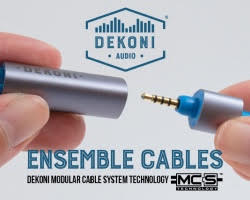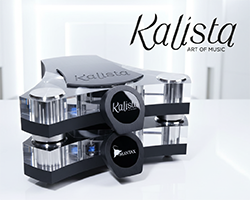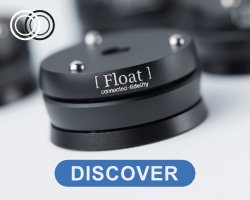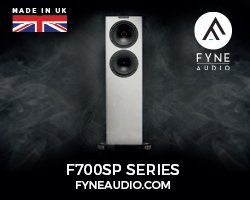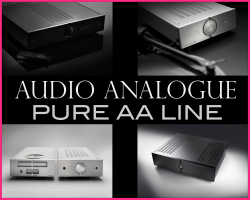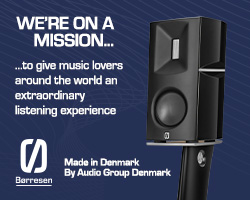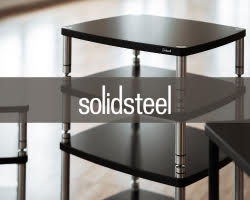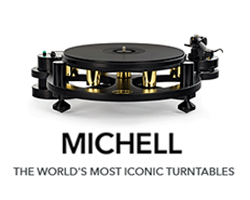SWAN SONG AUDIO HEADPHONES AND AMPLIFIER REVIEW
Headed up by Tony Crocker, Oklahoma-based Swan Song Audio takes a very different approach to the design of their headphones and headphone amplifier. The headphones use a combination of 3D printing techniques and different woods, and the amplifier uses 3D printed parts too. All this innovation makes the Sawn Song Audio combo a very different proposition to what you might be used to, but how do they sound? Janine Elliot finds out for HiFi PiG.
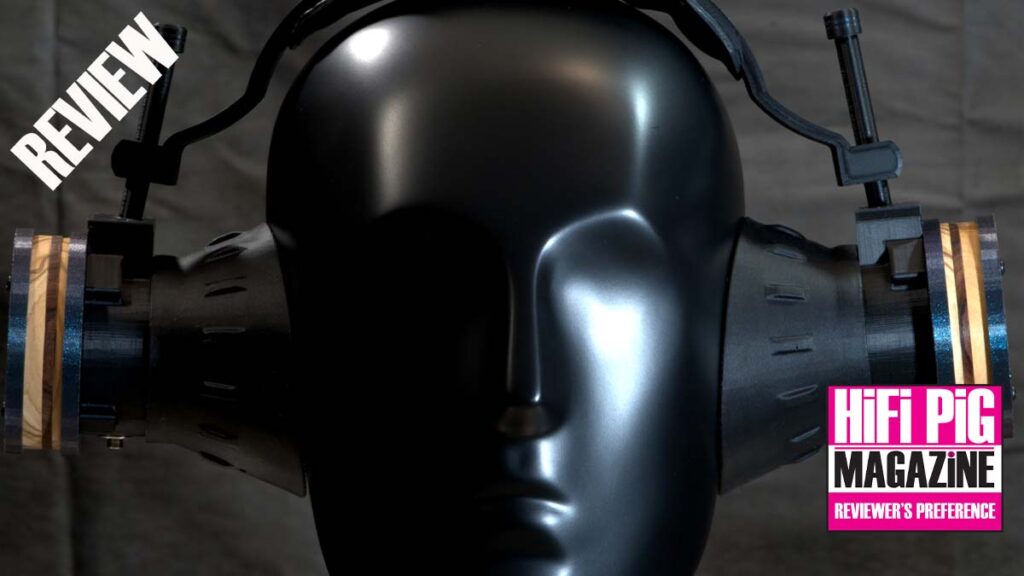
I don’t know my swan song; perhaps flying in space or performing live at the O2. Tony Crocker has announced his swan song. The friendly American with lovely bright curly hair I met at the Audio Show Deluxe in March this year was keen for me to make out what I would of his new headphone and battery-powered integrated amplifier system. Initial thoughts often mar the overall perception of anything – like the bulbous front of my mk1 Nissan Juke which looks like a bionic frog with its raised side-lights. But, after the first thoughts, it turns my Juke has been the most reliable car I have ever had. Turn to the Swan Song Audio headphone and amp combo, and you may well be quite shocked at first glance; the headphone looks perhaps more like it came out of an electrocution room and the amp, more like it came out of the Tate Gallery, it is so beautiful. Boy, do they make statements! Luckily, I don’t go on first thoughts. I guess that’s why I am a reviewer. I spend hours listening and even more hours writing every time I do a review. I want to be accurate and honest. The Swan Song Audio headphone system is a big statement, and their looks are very much a part of why they sound as they do. And boy, do they give a sound worth spending the time writing about them.
Tony has had an amazing career; he trained as an electronic engineer working with a defence contractor, has multiple business degrees, and has spent years consulting for large multinational companies. I could immediately see his love for what he created when I reported on the Audio Show Deluxe. Made in-house in Oklahoma, America, it was good to see another visual “piece of art” at the show, and I am amazed by his woodwork and 3D skills as much as the product design. Using this “new” printing technique, they can make it work at its best and look quite spectacular. In a day when 3D printing is still relatively new, this product shows how important it will become in the future. With several headphone choices in different wood finishes, creator Tony refers to them as “she” or “he”, depending on which model, just as I call my MG soft-top car “he”, or another word when it’s not working properly.
BUILD QUALITY, LOOKS, AND FEATURES
The solid parts are printed from a form of PLA (Polylactic Acid), thermoplastic polyester that can be softened by heat and hardened by cooling, and is a relatively bio-degradable and compostable form of plastic. PLA comes in a wide range of colours and strengths so Tony can be very adventurous. This manufacturing technique takes considerable time, especially for the transportation boxing and the amplifier’s “cabinet”. The amplifier printing takes no less than 163 hours to create, and the headphones 50 hours! That equates to (she gets out her calculator…) the time it takes to make 2.5 Mini Coopers! The Integrated Amplifier looks more like it has come out of an art exhibition, with a repeated diamond-shaped pattern. And I suspect it won’t just end there, as Tony told me on his present visit to the UK; “At the Victoria and Albert, I picked up some ideas I will be trying in the next month. I want to provide a series of patterns and colours to choose from”. Indeed, to me, it looked like those precious jewellery boxes that are made in India. The one I had for review was black with beautiful purple stripes and diamonds matching the headphones, but it can be any colour you want (as long as it is available), as every model is made “to order”.
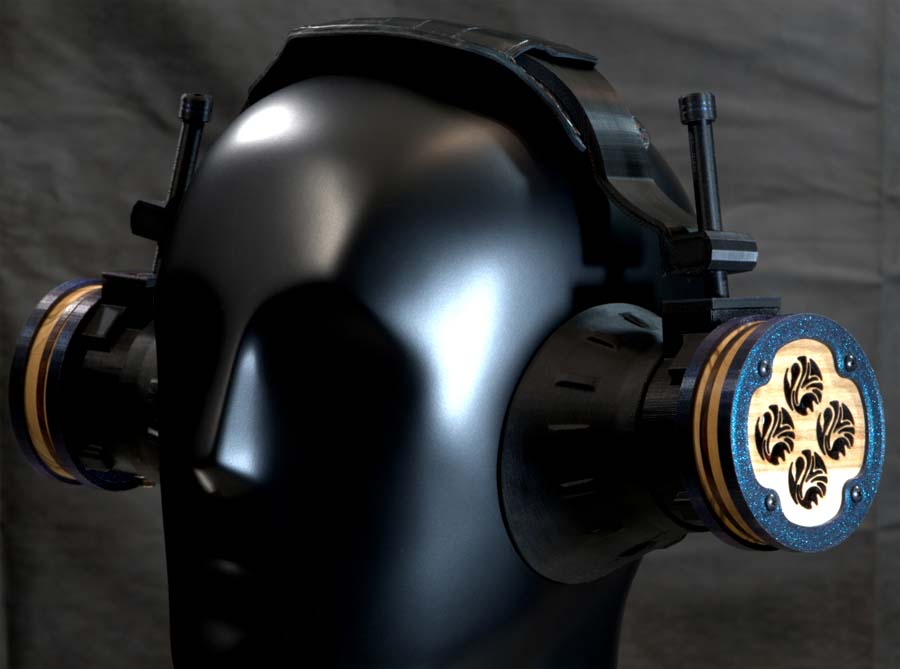
What makes this headphone/amplifier system interesting for me is the fact that it is designed to be run on the internal 12V battery power. I remember the American Sutherland battery phono-stage with a bank of 16 type D alkaline cells weighing that monster down, but it just worked so well. No rectifier, and certainly no need for smoothing or mains conditioning or worrying about electrical spikes. The internal rechargeable batteries can be replaced if in the unlikely event the Swan can’t be fed juice. At $16,000 this headphone amplifier might sound pricey, but there is an amazing amount of design, specification and manufacturing time on both the inside and the outside. Pure Class A transistor with a Diamond output buffer, it has a 4-to-6-watt (8-ohm) amplifier depending on the battery power remaining. Whilst it can also work on the mains, it only charges those batteries when you are not operating it. Battery life for headphone use is around 10 hours and for loudspeaker output much less. Charging takes around 10 hours. With more than 10 minutes of inactivity the battery power switches off, and also if (in headphone mode) the battery gets down to 9.3V. Control and power management are handled via 3 microprocessors. Tony uses National semiconductors, which he hand-matches. 4 bronze coloured sky-scraper copper heat-sinks and 4 power transistors with a vertical swan design heat-sink made from aluminium make this scream art. “I left this area exposed on the amplifier so that you can see that I use MELF resistors to handle the biasing”, he told me. The components used and the build quality on the PCBs is as professional as I have ever seen. There is nothing but love put into the design of this exotic-looking device, all carried out at his establishment. Inside is an upsampling 24bit 196kHz DAC, based loosely around a Burr Brown. Inputs are at the back; 2 galvanically isolated USBs (so that noise from the sending device is filtered out), a Toslink, and a set of RCA analogue inputs (with the latter in use the DAC will be powered down, to save power). This is actually two boxes joined together; the bottom contains the battery section and the top is the amplifier.
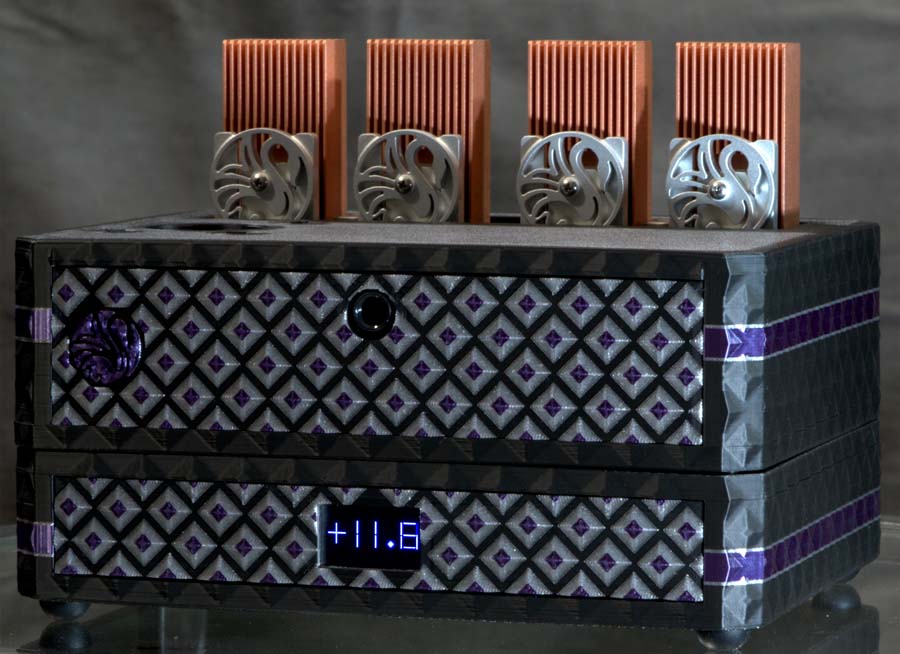
In both the amp and the headphones, the beauty of 3D printing means the complexity of colours and textures can be deployed at a fraction of the cost of any other construction technique. Various switches at the rear are used to change between headphone and speaker output, and charging the battery. At the top is a 2-tone purple LCD screen to indicate input and volume level, a 128step discrete 12V volume control, the colour matching the bodywork (and will be colour-matched to whatever colour amplifier you decide to invest in). His attention to detail is profound; Even the screen surface is curved like many watches, as being flat just wouldn’t look right for Tony. The source and volume levels are altered by three capacitive buttons around the screen that you can operate by close proximity (1.5mm) or by pressing. Do be careful though; long holds on or above the button swiftly alter the settings. It uses two 64-step controls to talk to the microprocessor for the volume level, so if you get to “64” you need to go up one more before you can then reverse direction. I also found on a few occasions the volume went down or up too much, and getting to the right level took a bit of practice or luck. I think I’d still prefer an (of course 3-D printed) old-fashioned rotary button! In the lower front is another LCD screen for you to check the voltage remaining in the batteries. The amplifier comes in three varieties; preamp ($12,000), integrated amp ($16,000) and mono-blocks (at $11,000), each looking fairly similar. A valve amplifier is also due out later this year. Microprocessors control the battery monitoring, amplification, source selection, volume control, and circuitry power.
Turning to the headphone itself, that is either method or madness. This is a very unique product in that it doesn’t have a conventional foam-filled leather or suede ear-cup, rather it is a conical-shaped TPE (Thermoplastic Elastomer) pad with a larger section going to the lower part of your head to provide good insulation from outside noises. The pads are very difficult to print. To those who have never tried the headphones, this might seem rather Heath Robinson, but it does work and is highly comfortable. Tony has even hand-made some for third-party cans belonging to customers. Getting 3D printers to use TPE is not easy. As Tony informed me; “I want a material that is not harsh but provides room for the sound wave to develop; think speaker cone or horn theory. Finally, the pads must withstand sweat and cleaning. Sweat stains are not very attractive, and foam deteriorates!” The cup also has a very small hole at the side to reduce pressure build up. Whilst the total weight of the headphone isn’t the lightest (it comes in at 11 ounces or 312g), the whole headphone sits well on your head, reminding me of the brilliant Abyss headphones I first saw over 10 years ago with its large wide leather-bound headband. They looked very distinctive and were very comfortable. Don’t decide to go running in these headphones, though, as they are not glued to your head; I did find that moving my head around whilst listening made them sometimes change position or even fall off; a bit like my excellent Stax Lambda Ear-Speakers. The height of the cup can be adjusted up or down, as well as allowing more or less pressure above/below the ear. What makes these headphones really interesting, though, is not the 50mm 115dB (23 ohm) composite dynamic driver, or the lovely cords (available in any colour you like) but it was the choice of wood used in the back chamber which alters the sound.
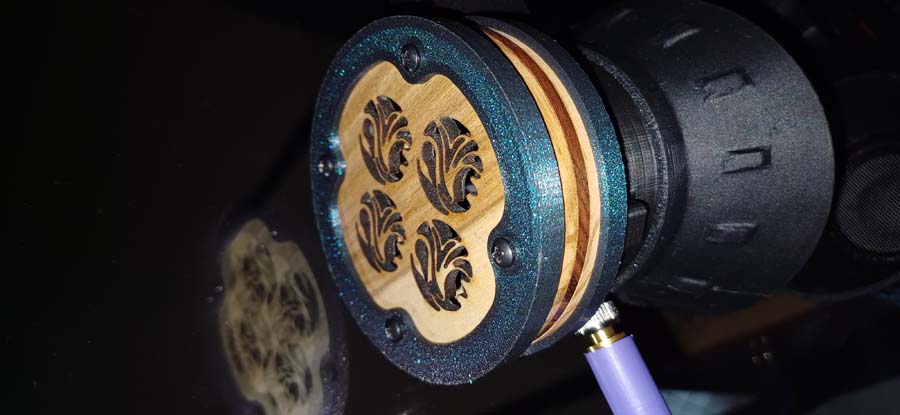
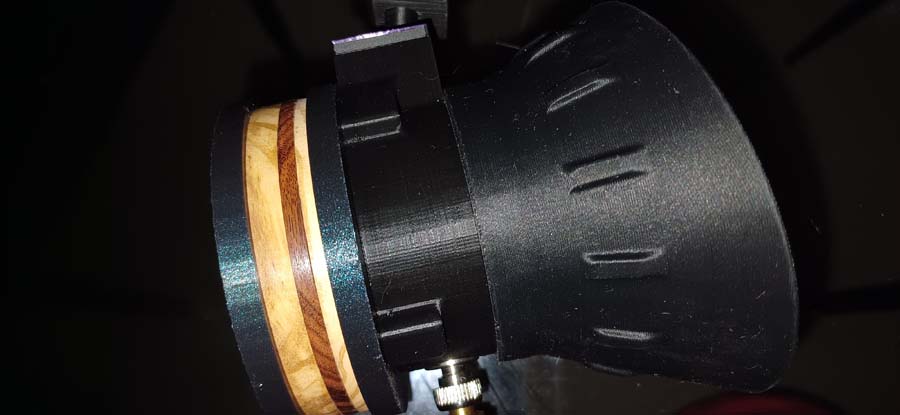
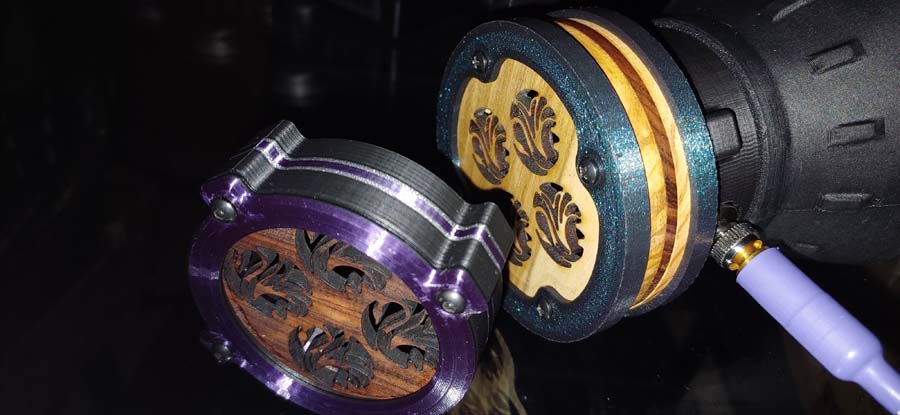
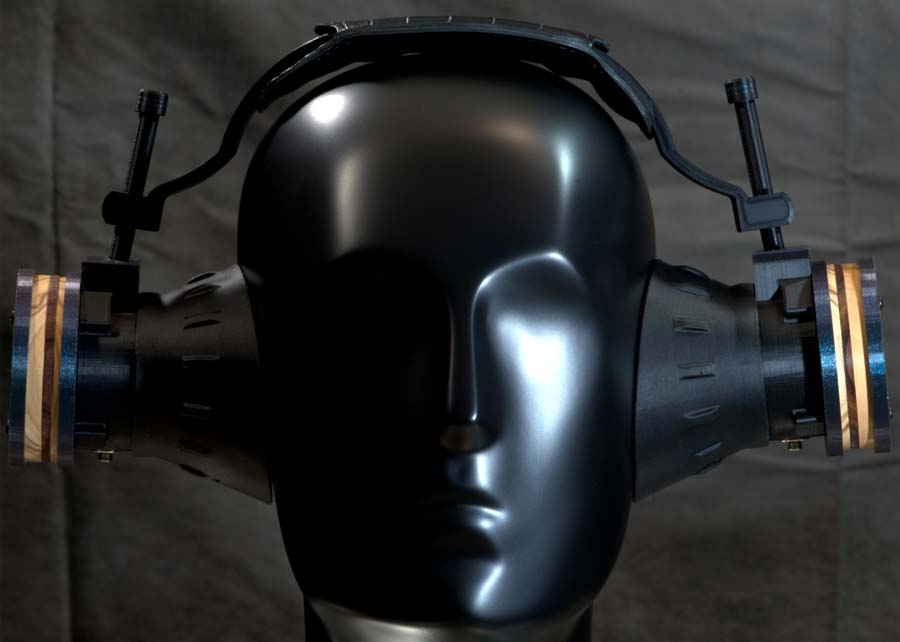
The headphones come in 3 versions;
Transcend – the tonal starting point, at 2350USD
Ethereal – These are brighter and with a larger scale listening experience, at 2,500USD
Explorer – User-defined tonality, depending on the wood you choose, at 2,500USD
I chose the latter for the review. The cup is made of a sandwich of different woods; the “Swan” patterned maple end piece, then a layer of olive, then rosewood, then another layer of olive. The internal “rosewood” can be changed by removing the 4 screws with the accompanying screwdriver for maple if you want to change the overall sound. I tried this alteration during my time with these headphones but preferred the sound as described above. This wood just gave it a very slightly raised level at around 200Hz-500Hz, and if I substituted it with the other wood, it accentuated more of the extreme ends of the frequency chart. All very subtle, but enough to see that I could tailor the sound if I desired. The back wooden plate has been beautifully patterned in the shape of a swan, which takes around forty minutes to laser-cut. The swans need to face forward and the accompanying 3.mm cable plugs click-fit onto the earpiece. Tony also showed me other closed-back chambers used in the Transcend model where in-between the Swan design he has glued in a lighter inlaid wood, a bit like the purfling in furniture, master violins, and guitars. Pure beauty. As the Swan Song Audio literature says, they have four principles; where tomorrow meets yesterday, modularity, hidden complexity, and purity of sound. This product had certainly ticked the first three.
Now it was time to hear how pure the sound was, and I was not to be disappointed.
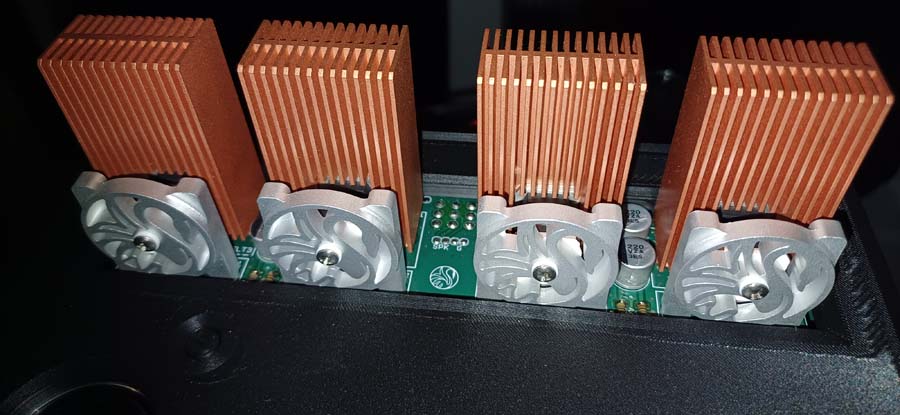

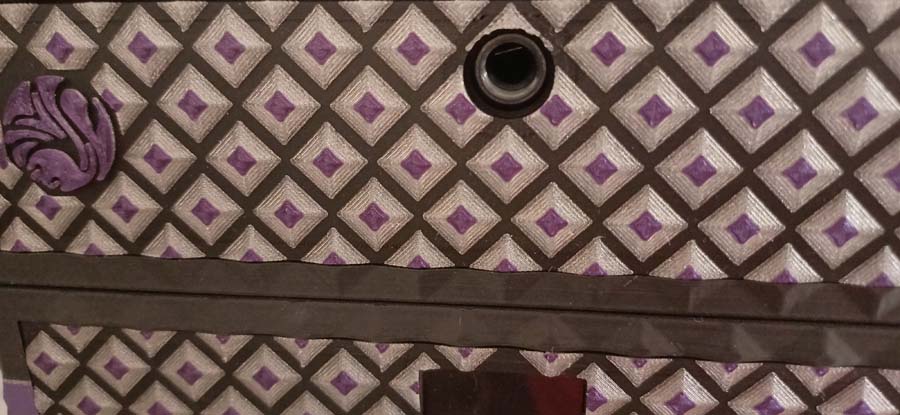
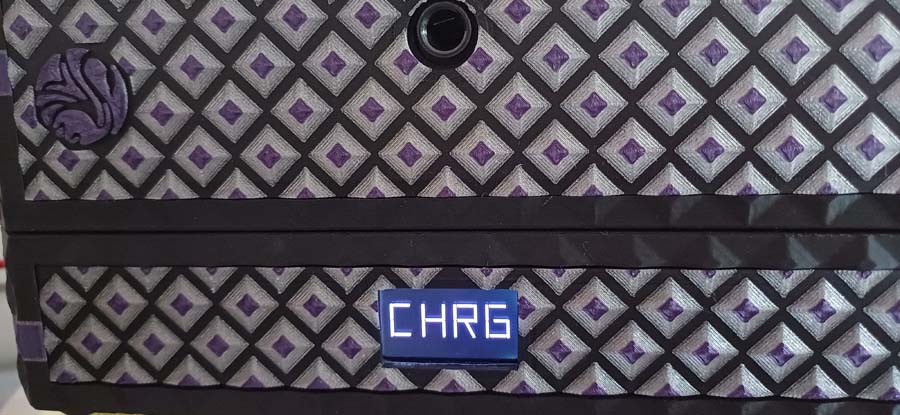
SOUND AND FIT
I really enjoyed listening to these headphones, not just using the Swan Song integrated amplifier, but also including a choice of DAPs and DAC/Headphone amplifiers, including the new iFi Valkyrie DAC/headphone amplifier which also uses Burr-Brown DACs. On all choices, the sound is very unique; incredibly fast, with exceptional integration and separation of all sounds/instruments, and with extreme head comfort, once I got used to keeping my head still.
Playing a wide variety of music, I began with a new release of American minimalist composer Steve Reich’s “Jacob’s Ladder” (composed in 2023). Having followed this composer at university 40 years ago, here he celebrates his own 40 years of partnership with the Nonesuch record label. The New York Philharmonic includes 2 sopranos and 2 tenor voices, piano, string orchestra, flute, clarinet and oboe, and two vibraphones, with his usual pulsating tonal patterns brilliantly captured by the headphones; detail, speed, piano bass-note extensions, brilliantly constructed like the headphones in this Bible-based work. Indeed, the headphones take clarity and spatial awareness to biblical proportions. The work finishes with “Traveler’s Prayer” written in 2020 with similar instrumentation positioned in their own space. These are not electrostatic nor planar, but the speed and detail could make you think they were. The fact that these cans don’t feel like a vice between your head adds to the enjoyment, but you do need to get into a good position before you relax and enjoy these for longer periods. Lying back on the recliner was very enjoyable. However, the sound is unlike any of the headphones you might experience at CanJam. If you want a tonal DNA or Beats-type type bass, then these won’t meet your needs. These are very accurate ear speakers, with more than just a hint of mid-frequency accentuation, though it does make vocals and strings really shine. Webster Lewis’s “Do You Believe” gave a very powerful performance, not just his voice but from the Hammond organ chords in my left ear, adding power to this iconic repeated-theme work. The drums were precise and spot-on. That detail from the headphones was evidenced not only in the audience in this track but also from the excessive studio reverb in London Grammar’s “House” (The Greatest Love 2024 24bit/96kHz). Her vocals were like treacle, though the mids were just a little too forward.
Turning to Stravinsky and his “Petrushka” (DECCA, L’Orchestre de Paris), it had an extremely clear top end, especially the glockenspiel and xylophone, and plenty of space for each instrument to sit in comfort. The famous “Russian Dance” second movement was very clean and with energetic blasts from the percussion instruments. The performance was pristine and with excellent time for decays. The piano is very well heard (indeed, the amplifier was always good with any pianoforte that I played in this review). This movement always reminds me of the cat and mouse chases in Tom and Jerry cartoons as the notes (particularly on piano) scurry around. Trumpets in “The Scuffle” are also very tight and forceful. This is such a great work from this composer, with the sad and beautiful “Death of Petruska” and the following movement “Police and the Charlatan” with a really beautiful bassoon melody. Each movement seems to show off different instruments and instrumentation, making it ideal for reviewing! This excellent album finishes with Debussy’s iconic “Prélude à l’après-midi d’un faune” with a great flute hanging in the air and double-bass all wrapped around a beautiful image of a warm afternoon on a lovely Summer’s day. This, and the composer’s “Jeux” both had excellent space, clarity and speed, only just lacking a slight naturalness as natural as the environment they express.
The amount of detail from these headphones was equally apparent in Kate Bush’s “Ring of the Mountain”. Her vocals are always a bit confusing on this track, as she almost links all the words as if she’s drunk. But the Swan Song allowed them to be clearer than usual. The forceful accompaniment is very tidy, too, placed inside my head. That linked nicely to Chasing the Dragon ‘Binaural Baroque’, with the dummy-head album allowing those instruments to escape my head and giving me an exceptionally clear harpsichord and guitar as well as the strings in Vivaldi’s Guitar Concerto. The beautiful second movement was perfectly formed using these headphones and amp; the long violin notes were passionate and clear. Even a mechanical interruption at 21” in didn’t quell my engagement.
Finally, I listened to one of my favourite progressive metal bands; Dream Theatre. Their music is highly detailed, not just in the notes and instrumentation, but also musically; a really aggressive music signature but hidden inside with some almost human emotion that unless you looked closely you might not make out; a bit like my comments at the start about not making assumptions just from what is immediately apparent to you. “Repentance” from the album Systematic Chaos is a track you really must listen to. It has that chaos, yes, but there is also a system to the music; spoken words, emotions, hurt, hope, humanity. It just works so well musically. The sound signature is also very detailed; the ride cymbals were very clean, quick, extended and exciting and I really couldn’t believe my ears were still so good at high-hertz counts. I found that a few years ago with Flare IEMs. Normally, saying such a thing would mean my next words would be “clinical” or “bright”, but the bass was just as good, but just not in your face or overblown. That little hole in the cup stops the pressure building up that often makes headphones/IEMs sound like disco bass bins. The bass drum was simply clearer than I had heard before. Even swapping for my HD660 headphones, which are normally too top-heavy and clinical, the Sennheisers just sounded dull and confused in comparison. I’m not saying the Swan Song Audio headphones are perfect, but what they did was enable me to see more of the music than I was hitherto used to. And whilst the mids were just very slightly too accentuated, I could always use a different wood.
NIGGLES
The unusual shape and ear-cup design might take some getting used to, but it does work. However, I did find the fit around the ears only worked well for me because I have masses of curly hair which helped in maintaining a more airtight fit around the ears and preventing movement. For those with smaller heads or the barnet-barren might find it a little more difficult, though I’m glad it doesn’t feel like a vice, as in many cans out there. You might need to adjust it to fit at its best.
And that volume adjustment might be very clever, but some might find it difficult to finely adjust.
CONCLUSION
If you take pride in getting every ounce of the detail from your music, then the Swan Song system is really worth investigating. The clarity and soundstage were both astounding, and they also worked well directly on the DAP and portable DAC I used it with, too. It will take a bit of adjusting to the sound as it can be a little forward in the midrange, though Tony will only be too happy to supply bits of wood to tailor the sound to your requirements.
I am giving the Swan Song Audio headphone system a Reviewers Preference award for several reasons. Firstly, this product has developed an age-old technology to improve on basic flaws such as comfort and sound, plus creating an original-looking product that can be user-adjusted to get the type of soundshape that pleases your ears.
AT A GLANCE
Build Quality:
A lot of time has been taken creating a very unique product, and the looks of the amplifier might well someday deserve a place in the New York Museum of Modern Art, but the internal specification and component build quality are also of the highest order
Sound Quality:
Impeccable extended tops and fast transients
Value For Money:
At $18,500 for the complete set, this is not a cheap headphone set-up, but the price is matched by the sound quality
The $2,500 headphones alone are worth considering if you can get past wearing the unusual design and fit
We Loved:
Detailed presentation
Speed and extended frequency range
Comfortable to wear
We Didn’t Love So Much:
You might need to modify the way you normally listen on headphones
Could sound clinical with certain music
Slightly forward midrange
Elevator Pitch Review: I hadn’t heard of Swan Song Audio until I briefly walked into a room at Audio Show Deluxe in March 2025 and saw a very unique looking pair of headphones plugged into a very ornate amplifier, showing much evidence of 3D printing. As soon as I plugged myself in, I knew that I needed to give it much longer listening time and a review was arranged. These not only look incredible but also sound spectacular, and after several hours I concluded that my hearing was actually better than I expected for my old age. Impeccable tops from cymbal strikes and a bass that didn’t boom, but was all there. We might well be getting used to companies promoting “carbon”, “titanium” or “diamond”, as the selling point, but could “3D printing” be the next watchword?
Price:
Explorer headphones $2,500
Small Integrated Amplifier $16,000
(Other headphones; Transcend $2,350, Ethereal $2,500)

Janine Elliot
HiFi PiG’s Stuart talks to Tony Crocker from Swan Song Audio at Audio Show Deluxe 2025
System used:
Astell and Kern SE180, Lenovo laptop, Samsung A23 (DSD, Qubuz, WAV, FLAC, MQA, MP3 Digital sources); A&K SE180, iFi Valkyrie (other amplifiers used); Sennheiser HD660 (Other headphones)
SUPPLIED SPECIFICATION
Output: 4-6 watts into 8-ohms
Weight (amplifier): 7lb 5-ounces; (headphones): 11-ounces
Dimensions (amplifier): 8.5” x 7” x 6.5” tall with heatsinks
Inputs 2 x USB, Optical, RCA
Output: ¼” headphone jack, 2 x 4.4mm banana L/S output
Distortion: 0.1414% at 2W (8-ohms)
Run-time: 10 hours (using headphones); 5 hours (<1W 8-ohm) and 3 hours (>1W 8-ohm) (using speakers)
Headphones: 50mm composite dynamic driver
3 year warranty






















































